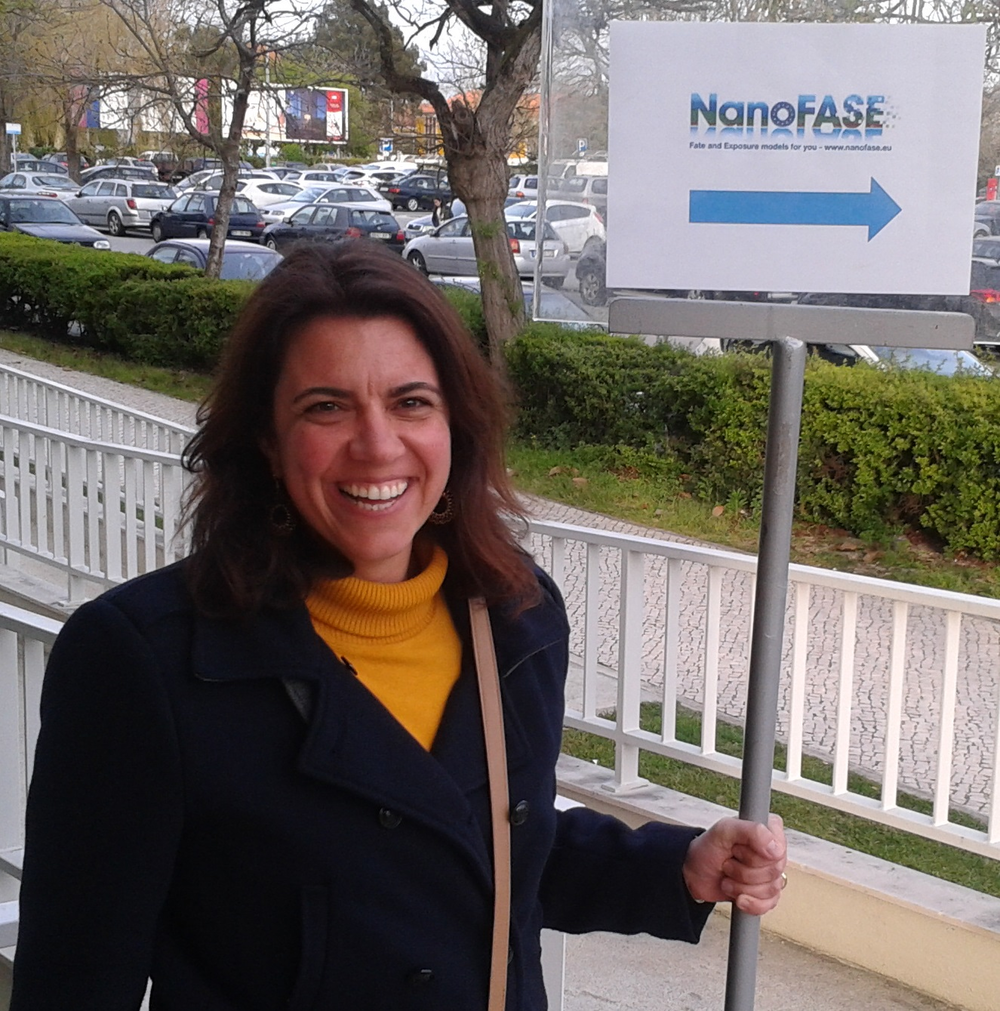NanoFASE Session at SETAC Rome: The environment as a reactor determining fate and toxicity of nanomaterials
NanoFASE Organizes Full-Day Scientific Session at SETAC Rome
by Iseult Lynch
Session 3.24 @SETAC Europe 2018: "The environment as a reactor determining fate and toxicity of nanomaterials" is co-chaired by Susana Loureiro (UoA, pictured), C.A.M. van Gestel (Vu), Iseult Lynch (UoB), and Claus Svendsen (NERC).
The H2020 project NanoFASE is working to drive community acceptance that pristine particles don’t exist in the environment and thus that environmental testing of "pristine particles only" is not informative of real effects. Thus, NanoFASE is developing a deep understanding of the types and timescales of environmental transformations of nanomaterials, with the goal to reduce the enormous diversity of pristine nanomaterials to a simpler sub-set of transformed particles that are likely to be the dominant form in each environmental compartment.
 |
|
To this end, NanoFASE is built around the "reactor" concept, whereby each environmental compartment (i.e. air, water, soil, wastewater and organisms) is considered to act as a reactor that transforms the nanoparticles it receives, through interactions with the biomolecules and other constituents of that compartment, and then emits the transformed nanoparticles to the next compartment. Thus, nanoparticles from consumer products such as textiles or cosmetics are released to wastewater, whereby they are transformed (reacted) through chemical, physical, biological and biomolecule interactions, often resulting in sulfidation and acquisition of a biomolecule corona, before being released into the effluent water and joining the freshwater compartment.
To build awareness of the reactor concept, and the nanoparticle forms that are relevant for ecotoxicity testing in the different environmental compartments, several NanoFASE partners are organising a session at SETAC Europe 2018 to showcase progress in addressing the theme of the environment as a reactor that transforms nanoparticles and thus determines their fate and behaviour. The session take place across the full day of Monday 14 May (TBC by SETAC), with 12 platform (oral) presentations and a large set of poster presentations. The morning will showcase research on the environment as a reactor that drives / modulates the toxicity of nanoparticles including on reproduction of Daphnia magna, uptake and elimination in freshwater benthic organisms, bioaccumulation in fish and food chain effects, while the afternoon session will highlight research on the environment as a reactor that affects nanoparticle fate in the environment including mobilisation of nanoparticles in soil column by earthworms´ bioturbation, heteroaggregation processes, attachment efficiency determination, long-term transformations in soil, and transformations during sewage sludge combustion.
We extend a warm invitation to all interested stakeholders to join us, hoping to see you there for this exciting programme of talks and posters, and inviting you to take part in the fruitful discussions and collaborative opportunities that will arise.
We will take our stakeholders from the regulatory, industry/consultants, academic and standardization communities through the on-line Clickable Exposure Assessment Framework derived from NanoFASE work and uptake your user feedback!
Click here to read a REPORT from our participation at SETAC Rome.

